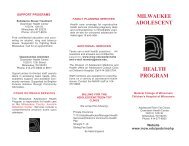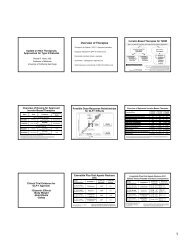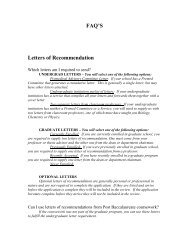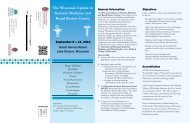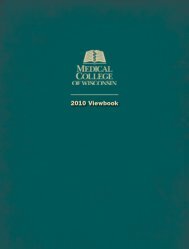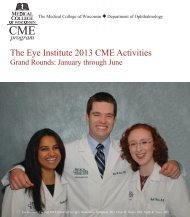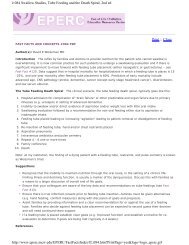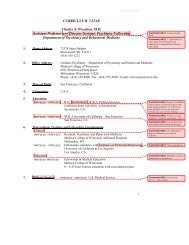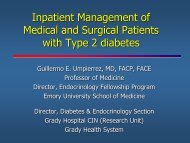MCW X-ray Diffraction Safety Manual - Medical College of Wisconsin
MCW X-ray Diffraction Safety Manual - Medical College of Wisconsin
MCW X-ray Diffraction Safety Manual - Medical College of Wisconsin
You also want an ePaper? Increase the reach of your titles
YUMPU automatically turns print PDFs into web optimized ePapers that Google loves.
Self Study Guide<br />
RADIATION PROTECTION<br />
The major factors in reducing radiation exposure are TIME, DISTANCE and<br />
SHIELDING. The following is a brief explanation <strong>of</strong> each:<br />
TIME<br />
As TI M E<br />
decreases<br />
EXPOSURE<br />
decreases<br />
Radiation exposure is measured as a radiation dose per unit <strong>of</strong> time. The most<br />
common used unit is mR/hr. Radiation dose is directly proportional to time. This<br />
means the less time you spend in a radiation field the less radiation you will<br />
receive.<br />
EXAMPLE: If you spend 10 minutes in a radiation field <strong>of</strong> 60 mR/hr, you<br />
receive a dose <strong>of</strong> 10 mrem.<br />
DISTANCE<br />
As DISTANCE increases<br />
EXPOSURE decreases<br />
Radiation exposure is inversely proportional to the square <strong>of</strong> the distance from the<br />
source. This means as you increase your distance from a source <strong>of</strong> radiation,<br />
your radiation exposure decreases very rapidly. By doubling your distance from a<br />
source <strong>of</strong> radiation, you will receive one-quarter the radiation exposure. It is<br />
important to note, however, if you move to half the distance, you receive four<br />
times the radiation.<br />
EXAMPLE: If you are working 2 feet from a radiation source that is emitting<br />
16 mR/hr, at that distance, and you move 1(one) foot closer, you will be<br />
Revised May 2004<br />
4




